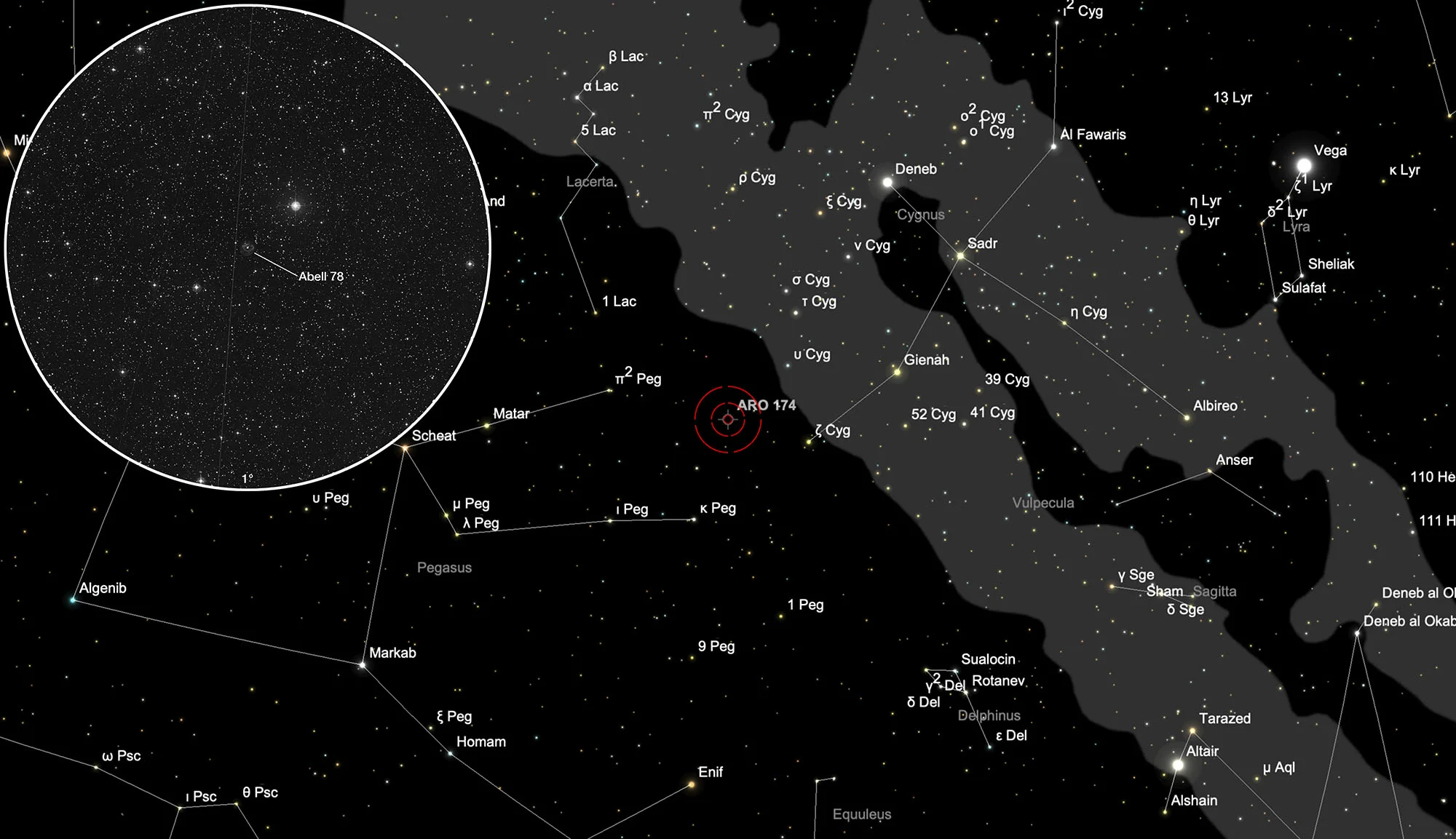Planetary Nebula Abell 78


History
The planetary nebula Abell 78 (PN A55 64, PN A66 78, PK 81-14.1) was discovered in 1955 by the American astronomer George Ogden Abell on the photo plates of the Palomar Observatory Sky Survey (POSS). In 1966 he published a list of a total of 86 planetary nebulae discovered on the POSS photo plates. [331, 332]

Physical Properties
When stars with about 0.8 to 8 times the solar mass of the hydrogen driving nuclear fusion are used up, they collapse to form dense, hot, white dwarf stars. During this process, the dying star sheds its outer layers of material and forms a cloud of gas and dust known as the planetary nebula (PN). This name is historical and misleading. It stems from the fact that the first planetary nebulae discovered in telescopes were mostly spherical and looked like distant gas planets.
However, some PNs like Abell 78 are the result of what is known as a «reborn» star. Although the star's core has stopped burning hydrogen and helium, a thermonuclear runaway is ejecting material at its surface at high speed. This ejection shocks the material of the old nebula and sweeps it away, creating filaments and the irregular shell around the central star. The faint outer halo is predominantly hydrogen, while the inner elliptical ring is predominantly helium. This confirms that inside stars hydrogen is converted to helium, which can be ejected back into the galactic gas pool to create future enriched stars. [334, 335]
| Designations | PN G081.2-14.9: A 78, PK 81-14.1, A55 64, ARO 174, VV' 554 |
| Right Ascension (J2000.0) | 21h 35m 29s |
| Declination (J2000.0) | +31° 41' 45" |
| Dimensions | 107." (optical) |
| Distance | 0.70 kpc |
| Radial Velocity | +17.0 ± 10.0 km/s |
| Expansion Velocity | 27. (O-III) km/s |
| C-Star Designations | AG82 433, CSI +31-21334 0, UBV 18570 |
| C-Star Magnitude | U: 11.86, B: 13.02, V: 13.21 |
| C-Star Spectral Type | O5fek, Of/WR(C) |
| Discoverer | ABELL 1955 |
Finder Chart
The planetary nebula Abell 78 is located in the constellation Cygnus. The best observation time is April to January. On 15 August the PN is in opposition with the Sun.
